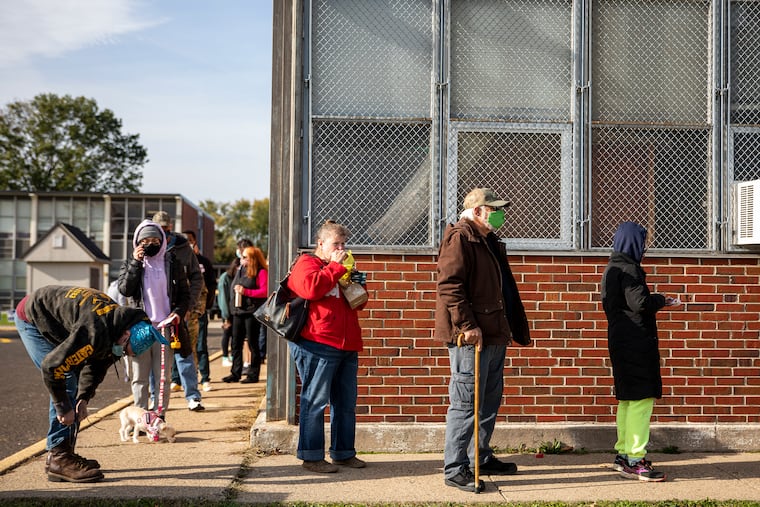It may look like Trump is winning Pa. before votes start to shift toward Biden. Whoever wins, that’s not fraud.
In the hours and days after polls close, the margins between Trump and Biden will change considerably. It’s called the “blue shift,” and it’s not fraud. It's just mail ballots being counted.

The vote totals will change as votes are counted.
That’s how it works.
As Pennsylvania’s votes are counted Tuesday and in the days to follow, the margins between President Donald Trump and Democratic nominee Joe Biden will shift. That just means more votes are being counted.
But what you might notice in particular is that the results Tuesday night will likely favor Trump. And then, over hours and days, the results that keep coming will likely push things more and more toward Biden.
It’s called the “blue shift,” and it’s preceded by what some have taken to calling the “red mirage.” And it’s not fraud, it’s not the election being stolen, it’s just the votes being counted over time.
The blue shift is not a new phenomenon (though it was only first identified a few years ago), and even in Pennsylvania, there have been blue shifts in the past. You probably didn’t even notice it before, but this year it’s likely to be quite obvious.
It might seem strange — and it might lead to false claims of voter fraud and election rigging. So here’s a quick breakdown.
There are three key things to understanding the blue shift this year:
Pennsylvania has way more mail ballots than ever before.
Counting those mail ballots takes a long time.
Democrats are much more likely to vote by mail than Republicans are.
Taken together, these three facts set up a predictable blue shift.
» READ MORE: How does a Republican lead on election night and still lose Pennsylvania? It’s called the ‘blue shift.’
This is the first year any Pennsylvania voter can vote by mail, thanks to a law passed last year that expanded the state’s restrictive absentee-voting system. In previous elections, only about 5% of votes were cast by mail. In the June primary, it was just over half.
The pandemic has been a major driver of that massive surge in demand for mail ballots, and more than three million voters requested mail ballots for the general election. That’s just over one-third of all registered voters in the state. As of Monday night, more than 2.5 million ballots had already been returned — more than 10 times the number of mail ballots used in 2016.
It will take time to count all those votes.
In-person votes are easy: Voting machines tally them and summarize them at the end of the night. Take a USB flash drive (or something similar) from the voting machine, plug it into the computer reading the results, and there you go. Results from a days’ worth of voting, fed into the system in minutes.
Mail ballots? Those take time. You have to check the envelopes. Open them, pull out the inner envelope and ballot, and then open the inner envelope. Pull out the ballot, flatten it, and scan it. Only then can you take the results from the scanner and enter them in the system.
» READ MORE: What we will and won’t know on election night in Pennsylvania
It will be a days-long process to count Pennsylvania’s mail ballots.
So on Tuesday night, we’ll be missing a large portion of the vote.
And those votes will be disproportionately for Biden, since Democrats are much more likely to vote by mail than Republicans are.
So as the mail ballots are counted after Election Day, the blue shift we see is really just about how people vote and the order in which those votes are counted. If Democrats and Republicans voted by mail and in person at equal rates, this wouldn’t happen.
It just means the in-person votes are counted faster, and those happen to skew toward Trump.